Criminal Justice
Putting Cuomo’s small-town police reform praise into perspective
An annotated press release of the governor’s statement on the village of Lowville “reinventing and modernizing” its police department.

Gov. Andrew Cuomo appeared in Lowville in 2015 to promote winter tourism in upstate New York. Office of Governor Andrew M. Cuomo
On Sunday, Gov. Andrew Cuomo released a statement commending the upstate village of Lowville for its work on police reform. It easily could have flown under the radar, but it piqued the interest of City & State. With so many localities working to reform their law enforcement agencies, Cuomo chose to praise the work of this tiny village and hold it up as an example for other towns and cities in the state to follow. But he didn’t offer very many details about what specifically Lowville was doing that warranted the praise or what other localities could learn from. A spokesperson for the governor did not respond to a request for comment about why Cuomo singled out Lowville, what they were doing better than other parts of the state and what specifically larger municipalities can learn from the small village of nearly 3,500 people. So City & State decided to provide some more information about Lowville, its reform efforts and how they compare to other places.
Below is the full statement from Cuomo, annotated with useful facts to help put the release into perspective.
“Earlier this year, it became painfully obvious that the relationship between New York’s police forces and the communities they serve was fraying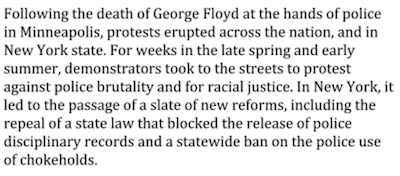 – and in response, I directed every local jurisdiction
– and in response, I directed every local jurisdiction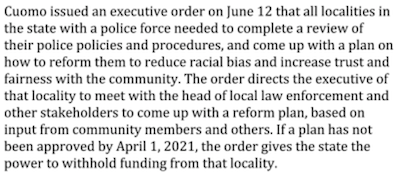 to fundamentally change how they operate. We knew that reform, reinvention, and modernization would not be easy, but we also know that they are more necessary now than ever before.
to fundamentally change how they operate. We knew that reform, reinvention, and modernization would not be easy, but we also know that they are more necessary now than ever before.
The Village of Lowville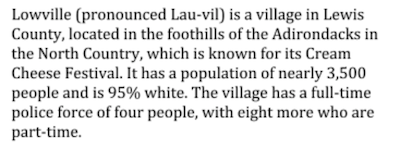 has taken this task seriously, and I commend them for moving through the process in a well thought out and determined manner.
has taken this task seriously, and I commend them for moving through the process in a well thought out and determined manner.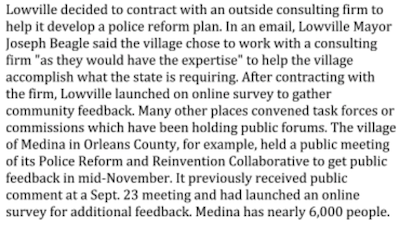 Lowville’s actions – from surveying residents
Lowville’s actions – from surveying residents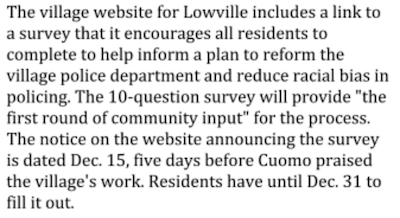 to ensure their voices are heard to engaging experts on policing reform
to ensure their voices are heard to engaging experts on policing reform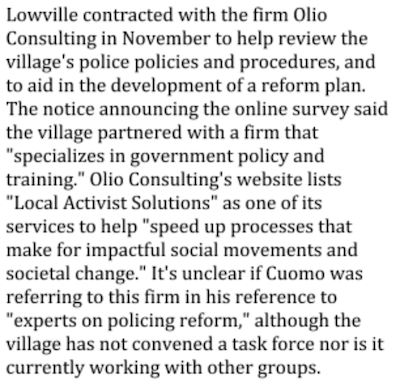 – should serve as an example
– should serve as an example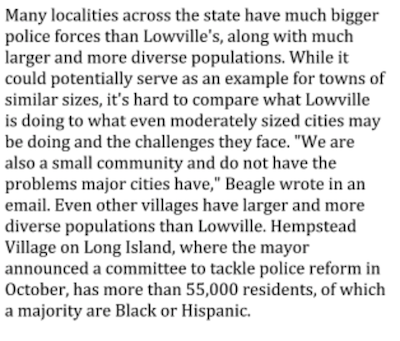 for localities across the state.
for localities across the state.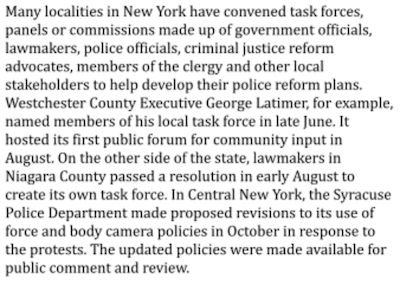
This year, the family of New York has already seen too much tragedy, and we will not let George Floyd, Breonna Taylor, Daniel Prude and too many others die in vain. These reforms will foster difficult but necessary conversations that bring police and communities together – and that lasting improvement will be their collective legacy.”

